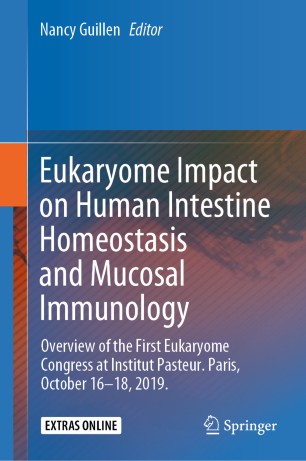تأثیر یوکاریوت ها بر هموستاز روده انسان و ایمنی مخاطی: مروری بر اولین کنفرانس یوکاریوت ها در انستیتو پاستور. پاریس، 16-18 اکتبر 2019. ۲۰۲۰
Eukaryome Impact on Human Intestine Homeostasis and Mucosal Immunology: Overview of the First Eukaryome Congress at Institut Pasteur. Paris, October 16–18, 2019. 2020
دانلود کتاب تأثیر یوکاریوت ها بر هموستاز روده انسان و ایمنی مخاطی: مروری بر اولین کنفرانس یوکاریوت ها در انستیتو پاستور. پاریس، 16-18 اکتبر 2019. ۲۰۲۰ (Eukaryome Impact on Human Intestine Homeostasis and Mucosal Immunology: Overview of the First Eukaryome Congress at Institut Pasteur. Paris, October 16–18, 2019. 2020) با لینک مستقیم و فرمت pdf (پی دی اف)
| نویسنده |
Nancy Guillen |
|---|
| تعداد صفحهها |
367 |
|---|---|
| نوع فایل |
|
| حجم |
9 Mb |
| سال انتشار |
2020 |
89,000 تومان
معرفی کتاب تأثیر یوکاریوت ها بر هموستاز روده انسان و ایمنی مخاطی: مروری بر اولین کنفرانس یوکاریوت ها در انستیتو پاستور. پاریس، 16-18 اکتبر 2019. ۲۰۲۰
عوامل جمعیتی یا اقتصادی متعددی در منشاء آسیب های نوظهور نقش دارند، به عنوان مثال: فقر، شهرنشینی، تغییرات آب و هوایی، درگیری ها و مهاجرت جمعیت. همه این عوامل یک چالش برای ارزیابی تأثیر (حال و آینده) بیماری های انگلی بر سلامت عمومی است. روده ها هدف اصلی این عفونت ها هستند. این یک محیط غنی از مواد مغذی است که خانه 100 تریلیون میکروب پیچیده و پویا است: میکروبیوم. بیشتر تحقیقات روی میکروبیوم بر روی باکتری ها متمرکز است که اکوسیستم روده را با طیفی از ارگانیسم های یوکاریوتی تک سلولی و چند سلولی مشترک دارند که ممکن است آنها را شکار کنند. علاقه ما به خانواده های میکروب های یوکاریوتی که در روده زندگی می کنند، به نام «یوکاریوت های روده»، که شامل قارچ ها، پروتیست ها و کرم ها هستند، متمرکز است. دانش از تعامل بین میکروبیوم و یوکاریوت ها، و تأثیر مشترک آنها بر هموستاز روده و بیماری ناچیز است و می تواند به عنوان یک منطقه مهم در حال ظهور در نظر گرفته شود. علاوه بر این، عواملی که یوکاریوت های بیماری زا را از کامنزال ها متمایز می کنند هنوز ناشناخته هستند. این کتاب مروری بر علم ارائه شده و مورد بحث در اولین کنفرانس یوکاریوت ها که از 16 تا 18 اکتبر 2019 در موسسه پاستور در پاریس برگزار شد، ارائه می دهد.
این کتاب موضوعات زیر را پوشش می دهد:
- ژنتیک، شیوع، و تنوع میکروب های یوکاریوتی روده. و تکامل تاریخی آنها (که مبهم باقی مانده است) و مشارکت بالقوه در هموستاز ایمنی مخاطی.
- زیست شناسی یکپارچه برای مطالعه زیست شناسی سلولی مولکولی برهمکنش های انگل-میزبان و پارامترهای متعددی که بر روند عفونی تاکید می کنند.
- بهره برداری از مهندسی بافت و میکروسیال ها برای ایجاد سیستم های سه بعدی (3D) که به درک هموستاز و فرآیندهای پاتولوژیک در روده انسان کمک می کند.
This book covers the following topics:
- Phylogenetic, prevalence, and diversity of intestinal eukaryotic microbes; and their (still enigmatic) historical evolution and potential contributions to mucosal immune homeostasis.
- Integrative biology to study the molecular cell biology of parasite-host interactions and the multiple parameters underlining the infectious process.
- The exploitation of tissue engineering and microfluidics to establish three-dimensional (3D) systems that help to understand homeostasis and pathological processes in the human intestine.




